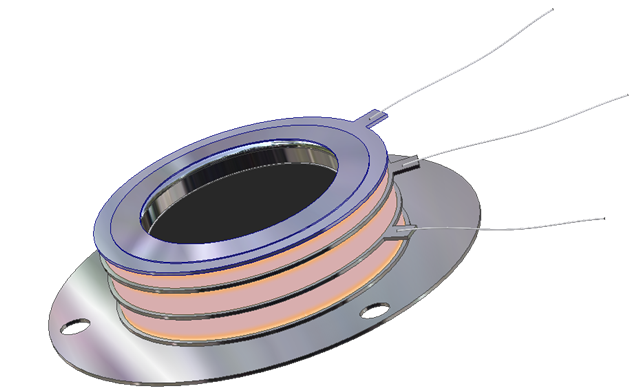Del Mar Photonics -
Newsletter -
Request a
quote for MCP detector
Research Description
University of Virginia
November 17, 2006
Studies of atomic clusters containing tens or hundreds of atoms have gained much
interest
in recent decades because of their potential to bridge the gap between isolated
atoms and
bulk systems. Notable results include the observation of a shell structure,
similar to that
found in electronic shells of single atoms. Theoretical calculations show that
certain levels
within this shell structure allow for strong Cooper pairing. These calculations
also show
that these particular shell levels, which are realistically attainable, could
show substantially
higher values of the superconducting transition temperature TC than are observed
in the
bulk material.
The number of electrons in the familiar electronic shell structure is analogous
to the
number of atoms N in the cluster. Certain clusters sizes are energetically
favorable; these
\magic clusters" of size Nm have geometries resulting in lower total energies.
Magic clusters
are of interest to supercondictivity applications because of their high density
states in the
HOS and LUS levels. If the energy gap between these two levels is smaller than
or comparable
to the pairing energy gap, the magic cluster will be in the superconducting
phase.
Our group at the University of Virginia is capable of mass-selecting metallic
clusters and
probing their energy. Clusters of various sizes are created by a pulsed ND:YAG
laser, then
pushed through the a narrow temperature-controlled canal by an appropriately
timed pulse
of He gas. After passing through the canal long enough to thermalize, the
clusters emerge
between the plates of a mass spectrometer. The voltage between the plates is
then switched
on, causing ionized clusters to accelerate through a long tube toward a
microchannel plate
detector. The purpose of this time-of-°ight mass spectrometer is to identify the
masses of
the clusters by their arrival time. Once the arrival time of a particular
cluster of interest
is identi¯ed, a pulse from a UV laser is triggered to photodetach the extra
electron from
the cluster. The energy of this electron is measured and, upon repeating this
process many
times, an energy spectrum for the cluster is obtained.
The calculations which motivate this work predict that at temperatures near TC,
strong
pairing will have a substantial impact on the cluster energy spectrum. The onset
of pairing
should increase the minimum excitation energy. Our group will ¯rst look for this
energy
increase in Al clusters at around 90K, the predicted TC for \magic" Al clusters.
Future
research will include the search for diamagnetism in superconducting Al
clusters.
Featured Product:
Microchannel Plates, Detectors
and Imaging Systems
Examples of research applications:
Studies of the atomic clusters at the
University of Virginia -
Amber Post
Featured MCP customer:
The Castleman Group at PSU
MCP home -
MCP references -
Absolute ion detection efficiencies of a microchannel plate -
How to choose
MCP detector
MCP-GPS-46/2-CF6" Open
MCP imaging detector mounted on CF6" flange -
MCP-GPS and
MCP-IFP imaging detectors
MCP-MA -
Detecting short proton
beam from a picosecond CO2 laser ionized H2 plasma
MCP-MA25/2 are used in aSPECT to
study the background
MCP setup for velocity map imaging apparatus
Microchannel Plate Detector (MCP) setup for Plasma Desorption Mass
Spectrometry (PDMS)
MCP detector for high resolution ion time-of-flight analysis for measuring
molecular velocity distributions
X-ray detection system based on the MCP/phosphor screen assembly
Analysis of biological molecules on surfaces using stimulated desorption
photoionization mass spectrometry
MCP detector for laser ablation/ionization experiment
A linear radiofrequency quadrupole ion trap for the cooling and bunching of
radioactive ion beams
MCP + phosphorous screen for imaging of XUV radiation (14eV- 160-eV) in high harmonics experiments
Exchanging MCPs in Time-of-Flight detectors
Request a
quote for MCP detector
